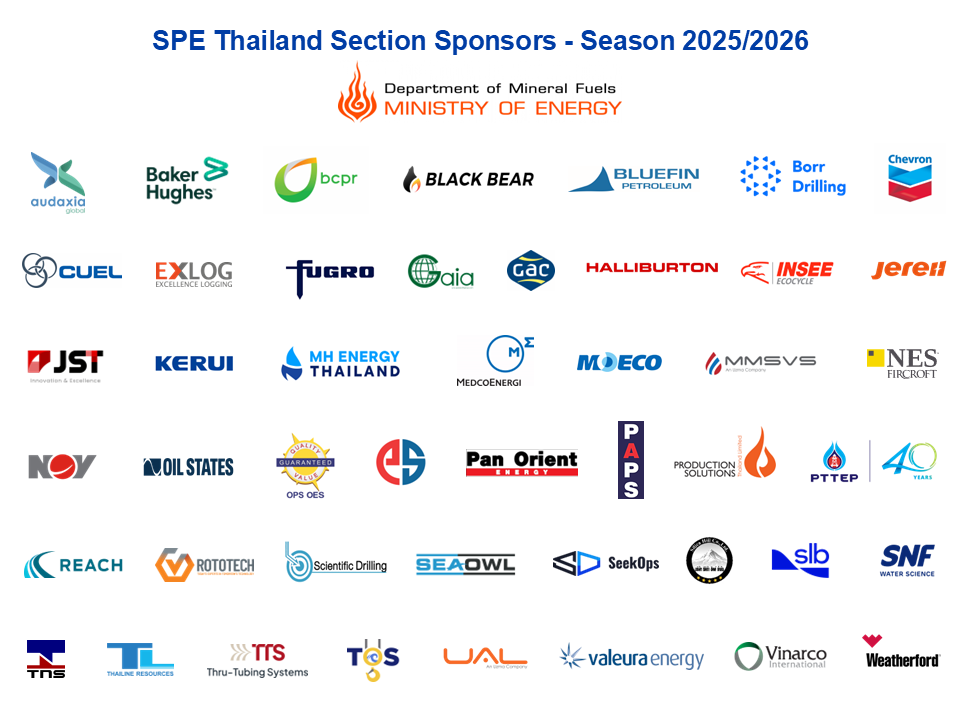Abstract:
The Gulf of Thailand
(GOT) Drilling Evolution represents a remarkable journey in the region's
petroleum industry, significantly contributing to Thailand's long-term energy
security and economic resilience. Over the past four decades, the evolution of
drilling practices in the rift basin has not only expanded field life but also
increased recoverable reserves. This progress has been driven by continuous
performance improvement, innovation, and effective problem solving through
strategic planning, collaboration, and cost reduction.
Cross-functional
teamwork has played a crucial role in this evolution, enabling the drilling of
more wells at lower costs. This has boosted both proven (1P) and probable (2P)
reserves, even in geologically complex environments. The adoption of Slimhole drilling
and advanced technologies has accelerated well production, improved data
integration, and increased recoverable reserves while reducing operational
costs.
Optimized project
management in multi-well planning and execution has further contributed to this
success. By reducing wellhead platform costs, enhancing well design, and
promoting operational efficiency through batch drilling and slot recovery, the
industry has achieved significant milestones. Collaboration with business
partners to customize equipment and services has improved operational
capabilities, while robust in-house training programs have fostered individual
competency and sustainable practices.
Ultimately, the GOT Drilling Evolution is poised to substantially increase the production of gas, condensate, and crude oil. This ensures a reliable and affordable national energy supply and effectively manages the volatility associated with imported LNG prices. As gas continues to serve as the transition fuel, the GOT Drilling Evolution not only sustains Thailand’s growth but also can be modernized to pioneer the path toward Net Zero — Integrating Carbon Capture and Storage (CCS), Hydrogen Production, and Enhanced Geothermal Systems (EGS) using existing gas infrastructure.
Bio:
Pasuk Eagark has
over 40 years of experience in the oil and gas industry, focusing on drilling
and well services globally. He began his career in 1976 at Pool International
in Saudi Arabia, advancing from a roustabout to an assistant driller.
He earned a Bachelor
of Science in Petroleum Engineering from Texas A&M University in 1984. He
was subsequently hired by Unocal, where he assumed various technical and
leadership roles in Thailand and abroad.
Since 2002, Pasuk
has worked as an independent consultant, advising operators and National Oil
Companies across the Asia-Pacific region. His notable projects include leading
performance improvements for Chevron Thailand, managing wells for PTTEP
International, and overseeing recovery operations at Montara in Australia. He
has made significant contributions to drilling practices in the Gulf of
Thailand.
Recognized for driving performance enhancements, Pasuk excels in crisis recovery and managing complex multi-rig operations. His career reflects a commitment to safe well delivery and energy transition advisory services, establishing him as a trusted industry expert.
